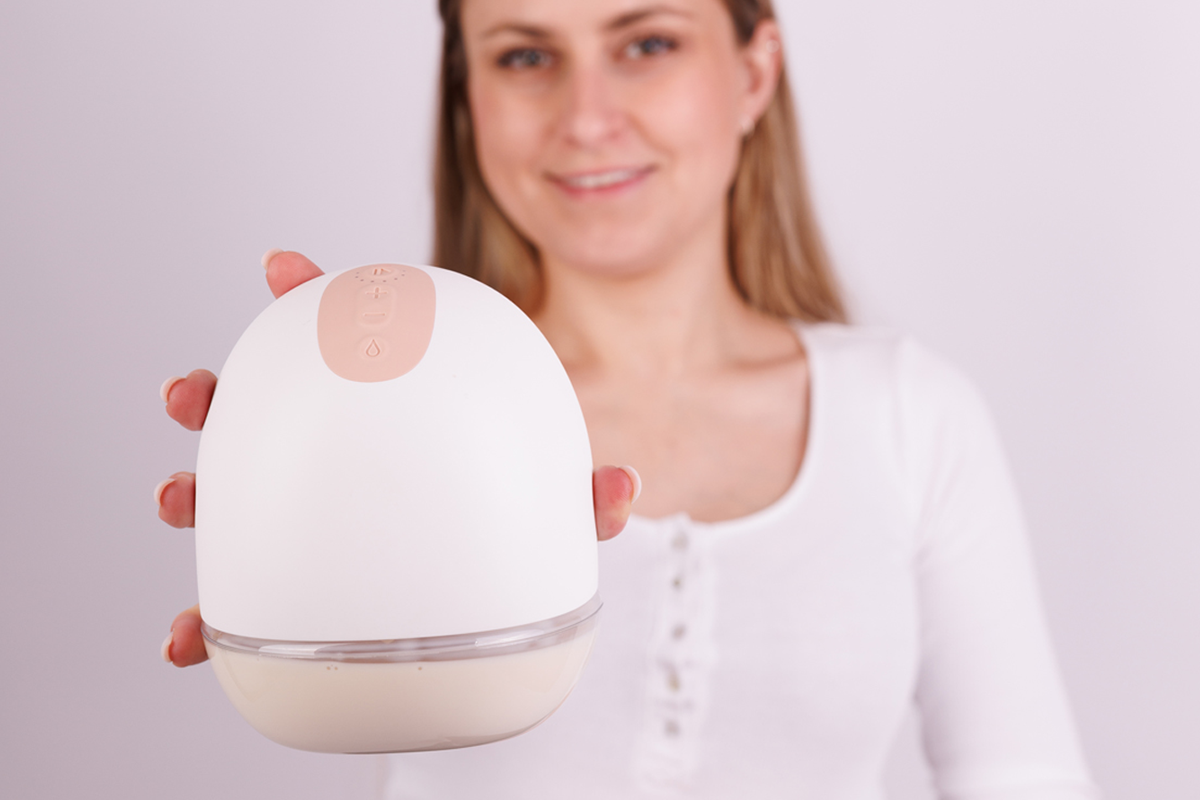Hey mama! Ready to dive into the wonderful world of wearable breast pumps (and alliterations apparently...)? This seemingly new technology doesn't have to be scary or complicated to use, in fact it was designed to make your life simpler! Let's dive in. These nifty devices are changing the game for busy folks who need to express milk on the go. Unlike traditional pumps that keep you tethered to one spot, wearable options like the Perifit Pump offer hands-free convenience. Imagine pumping while doing chores, working, or even grocery shopping - talk about multitasking! Whether you're a pumping pro or just starting out, this guide will walk you through using a wearable breast pump step by step. So, let's get pumped and explore how these innovative gadgets can make your life a whole lot easier!
How does a wearable breast pump work?
Innovative design for hands-free pumping
Wearable breast pumps like the Perifit Pump offer a revolutionary approach to expressing milk. Unlike traditional pumps, these devices fit discreetly inside your bra, allowing you to pump hands-free while going about your day.
Customizable pumping experience
The Perifit Pump boasts hospital-grade suction power of up to 300mmHg, matching the strength of many traditional pumps. With fully customizable rhythms, you can tailor your pumping session to your body's needs. The pump typically offers two modes: stimulation and expression. It starts with faster cycles and lower suction to stimulate let-down, then switches to stronger, slower suction for milk extraction.
Smart features for modern parents
Many wearable pumps, including the Perifit Pump, connect to smartphone apps for easy control and tracking. This allows you to monitor milk levels and adjust settings without undressing. The quiet operation (as low as 35 dB for Perifit) ensures discreet pumping in any setting. Some apps even include a power pumping program, designed to mimic a baby's cluster feeding to help boost milk supply. With these innovative features, wearable breast pumps are revolutionizing the pumping experience for busy parents.
Step-by-step guide on how to use a wearable breast pump?
Prepare your pump
Before using your wearable breast pump, wash your hands thoroughly and ensure all parts are clean and dry. Assemble the pump components, including the flange, connector, and bottle. For the Perifit Pump, make sure the diaphragm and duckbill valve are properly attached.
Position and start the pump
Center your nipple in the flange and secure the pump in your nursing bra. Use the included bra extender if needed. Press the power button to turn on the pump, then press it again to start pumping. The Perifit Pump begins in Stimulation mode to encourage let-down.
Adjust and monitor
After two minutes, the pump will switch to Expression mode automatically. Adjust the suction intensity using the +/- buttons for comfort. Monitor milk flow and adjust as needed. The Perifit app allows you to track milk levels without undressing.
Finish and clean
When finished, press the power button to stop pumping. Carefully remove the pump from your bra. Store expressed milk properly and clean all washable components thoroughly. The Perifit Pump's Hub should not be immersed in water.
Can you use a wearable breast pump every day?
Daily use and convenience
Wearable breast pumps like the Perifit Pump can absolutely be used on a daily basis. These innovative devices offer unparalleled convenience, allowing you to express milk discreetly while multitasking. Many parents find wearable pumps to be a practical option for regular use throughout the day.
Considerations for everyday pumping
While wearable breast pumps are designed for frequent use, it's important to consider a few factors:
- Suction strength: Wearable pumps may have lower suction power compared to traditional electric pumps. Some lactation consultants suggest that this could potentially impact milk supply over time. However, the Perifit Pump does not compromise on suction strength, offering adjustable suction levels up to 245 mmHg, which is comparable to hospital-grade pumps. This ensures efficient milk removal and helps maintain a healthy milk supply for regular, everyday use.
- Milk output: Monitor your milk production to ensure the wearable pump is effectively emptying your breasts. Combining wearable pumps with traditional ones may offer more optimal results.
- Comfort and fit: Pay attention to how the pump feels during extended use. The Perifit Pump's soft silicone flanges in multiple sizes can help ensure a comfortable fit. To help you, please consult our flange size guide to select the one that suits you best.
Optimizing your pumping routine
To make the most of your wearable breast pump vs regular pumps, consider these tips:
- Charge your pump daily to make sure you always have a full battery
- Consider traveling with a cooler and ice packs to store the milk you pump on-the-go until you can place it in a fridge.
- Practice using different programs to find the best one for your pumping needs
- Use the Perifit app to track milk levels and customize pumping sessions.
💡 By following these guidelines, you can effectively incorporate a wearable breast pump into your daily routine, enjoying the freedom and flexibility it offers.
Can you use a wearable pump while lying down?
Using a wearable breast pump while lying down can be a game-changer for many, but it's important to understand the capabilities and limitations of different models.
Wearable breast pumps are engineered to offer freedom of movement, allowing users to pump discreetly while multitasking. However, not all wearable pumps are created equal when it comes to lying down.
When using a wearable pump while lying down, keep these points in mind:
- Check your pump's specific guidelines, as not all models are suitable for reclined use
- Ensure a proper seal to prevent leaks
- Be mindful of potential overflow in non-spill-proof designs
💡 Always follow the manufacturer's instructions to ensure optimal performance and safety when using your wearable breast pump.
Can you use a wearable breast pump with low milk supply?
Wearable breast pumps can be a viable option for those with low milk supply, offering convenience and flexibility.
Wearable pumps like the Perifit Pump allow for more frequent pumping sessions throughout the day, which can help stimulate milk production over time.
When choosing a wearable pump, look for models with higher suction power and customizable settings to best address your individual needs.
💡 Proper fit and sizing of pump flanges is crucial for effectiveness and comfort when learning how to use a wearable breast pump. Consulting with a lactation specialist can provide valuable guidance in selecting and using the right pump for your situation.
Can you use a wearable breast pump with large or small breasts?
Adapting to different breast sizes
Wearable breast pumps can be used effectively by individuals with various breast sizes, but finding the right fit is crucial. The key is ensuring the flange covers the entire nipple area and wearing a supportive bra to keep it in place. It's essential to find a pump that fits snugly and doesn't shift during use.
Importance of proper fit
Regardless of breast size, the most critical factor in how to use a wearable breast pump effectively is achieving the right flange fit. Measuring your nipple size and selecting the appropriate flange is crucial for comfort and efficiency. Some users may need to purchase additional flanges separately to find their perfect fit.
There you have it! Using a wearable breast pump like the Perifit Pump can be a game-changer for your pumping routine. Compared to regular pumps, these hands-free options give you the freedom to multitask while expressing milk. Whether you're working, watching your kids, or just want to relax, a wearable pump can make your life so much easier. Remember, every body and every pumping journey is unique, so be patient with yourself as you figure out what works best for you. With a little practice, you'll be a pro at using your wearable pump in no time. Happy pumping, and don't forget to celebrate your amazing body and all it can do!
Source:




